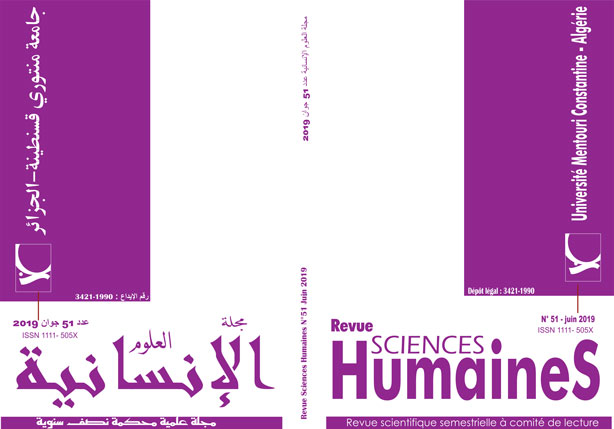قرينة الأسباب الوجيهة كدافع للدولة الساحلية لقيامها بعملية المطاردة الحثيثة في البحر
Keywords:
مطاردة, مطاردة حثيثة, سفن حربية, بحر, بحارAbstract
كثيرة هي السفن التي تخترق في كل مرة سيادة الدولة الساحلية وأنظمتها، لأسباب كثيرة منها: المرور دون إشعار مسبق، والصيد الجائر في مناطقها السيادية، ...إلخ. ما يسفر عن خرق صارخ للقوانين، والأنظمة المتعلقة بالدولة الساحلية، إلا أن حقها مكفول في هذا الصدد، باتخاذ إجراءات قانونية ردعية منها: التنويه لعملية الخرق القانوني بالطرق الدبلوماسية، أو إنذار السفن الدخيلة وضرورة التعريف بهويتها، وإذا لزم الأمر قد تكون هدفا مباشرا لإطلاق النار وخطر الإغراق. فإذا لم تذعن وسارعت إلى الفرار، قد تتعرض لعملية المطاردة الحثيثة والمستمرة، من طرف السفن الحربية بهدف إيقاف خطر هذه السفن الدخيلة ومحاكمتها. إلا أن تطبيقات المطاردة الحثيثة في القانون الدولي عديدة ومختلفة، باختلاف الأسباب والدوافع، وهو ما يشكل جوهر بحث هذا الموضوع.
Downloads
References
- راجع المواد؛ 194 و195 و196 من اتفاقية الأمم المتحدة لقانون البحار، المنبثقة عن أعمال المؤتمر الثالث لقانون البحار، المنعقد بمدينة مونتيغوباي (جاميكا) لعام 1982.
- فاروق محمد صادق الأعرجي، مباحث في القانون الدولي للبحار،ج 01، ط 01، منشورات زين الحقوقية، بيروت، لبنان، 2015، ص 306. راجع في ذلك أيضا: محمد هواش، ريم عبود، القانون الدولي للبحار، منشورات الجامعة الافتراضية السورية، سوريا، 2018، ص 101.
- فاروق محمد صادق الأعرجي، نفس المكان.
- صلاح الدين عامر، القانون الدولي للبحار (دراسة لأهم أحكام اتفاقية الأمم المتحدة لقانون البحار لعام 1982)، ط02، دار النهضة العربية، 2000، ص 341 ومابعدها. وانظر أيضا: فاروق محمد صادق الأعرجي، نفس المكان.
- فاروق محمد صادق الأعرجي، نفس المكان.
- فاروق محمد صادق الأعرجي، المرجع السابق، ص 307.
-Voir ; Alexander Downer ; Minister for Foreign Affairs, University of Sydney, Symposium, Strategic Directions for Australia and the Law of the Sea, 16 November 2004. www.foreign minister.gov.au/speeches/2004/041116_unclos.html.
The Minister for Foreign Affairs announced that the Australian Government was working toward a 21 st century definition of « Hot Pursuit».
- انظر؛ عامر غسان سليمان فاخوري، (حق المطاردة الحثيثة في البحر)، مجلة الشريعة والقانون، كلية القانون، جامعة الإمارات العربية، السنة السادسة والعشرون، العدد 49، يناير 2012، ص 290.
- فاروق محمد صادق الأعرجي، المرجع السابق، ص 309.- انظر أيضا إلى الموقع الالكتروني: م_في_مافي_مرمرة/http://ar.wikipedia.org/wiki
- عامر غسان سليمان فاخوري، المرجع السابق، ص 287.- انظر أيضا إلى الموقع الالكتروني: م_في_مافي_مرمرة/http://ar.wikipedia.org/wiki
- S.S. Lotus (France vs Turkey), 1927 PCIJ 5 (Ser. A) N°. 10, 25 (Judgm., September7). The rule pronouned by the PCIJ in the Lotus case is that « vessels on the high seas are subject to no authority except that of the state whose flag they fly. »
- عامر غسان سليمان فاخوري، المرجع نفسه، ص 293.
- انظر؛ علي ابراهيم، الأشخاص القانونية، مفهومها وأركانها ونظامها القانوني، القاهرة، دار النهضة العربية، القاهرة، 2000، ص 719.
- «The basis of allowing a pursuit is to place the alleged offender in the same position as if he had been arrested at the time of the commission of the offence.»
- عامر غسان سليمان فاخوري، المرجع نفسه، ص 294.
- «The International Tribunal for the Law of the Sea has stated that these conditions for the exercise of the right of hot pursuit … are cumulative. Each of them has to be satisfied for the pursuit to be legitimate under the convention. »
- M/V Saïga Case (N°2) (St Vincent and the Grenadines vs Guinea), ITLOS case N°.2. 1 July 1999, paragraph 146.
- عامر غسان سليمان فاخوري، المرجع نفسه، ص297.
- فاروق محمد صادق الأعرجي، المرجع السابق، ص 309.
- J. Marissen ; Hot Pursuit on No Pursuit ? The F.V. South Tomi Arrest in 2001, p. 16.
- Australian and New Zealand Maritime Law Journal 66, 2002.
- راجع المادة 29 من اتفاقية 1982 لقانون البحار.
- فاروق محمد صادق الأعرجي، المرجع السابق، ص 310.
-21Reports of International Arbitral Awards, Recueil des Sentences Arbitrals, s.s « I’m Alone », Canada vs United States of America, 30 June 1933 and 5 January 135, Volume III , pp. 1609-1618. United Nations, 2006.
- المادتين 30، 32 من اتفاقية 1982.
- المادة 31 من نفس الاتفاقية.
- عامر غسان سليمان فاخوري، المرجع نفسه، ص ص 304- 305.
- « To prevent abuse, the Commission declined to admit orders given by wireless, as these could be given at any distance ; the words visual or auditory signal’exclude signals given at a great distance, and transmitted by wireless. » Yearbook of the International Law Commission, Volume II, para iii, Report to the General Assembly, 1956, p. 285.
- N. Poulantzaz, The Right of Hot Pursuit in International Law, (2002), pp. 156-657. This wording was adopted by the International Law Commission (ILC) in 1956 and is understood to provide for a distinction between a certainty that an offence haz been committed and a mere suspicion. Hence “good reason to believe” is founded upon strong indications and not on mere suspicion or suppositions that an offence has been committed.
- L. Blakely, The End of the Viarsa Saga and the Legality of Australia’s Vessel forfeiture Penalty for Illegal Fishing in its Exclusive Economic Zone, 17 Pacific Rim Law and Policy Journal Association, (2008), p. 677.
- " The authorities had not seen the men fishing in the Australian fishing zone and the case had been based entirely upon circumstantial evidence. " ,Voir: A. Banks, $30 m claim after fishers freed, The Australian, 2005, p. 4.
- M/V Saiga Case (No.2) (St Vincent and the Grenadines v Guinea) ITLOS Case No.2. 1 July 1999, paragraph 146; see also B. Kwiatkowska, The Saint Vincent and the Grenadines v Guinea M/V Saiga Cases, 11 Leiden Journal of International Law, (1998), pp. 547-564.
- تتكون هذه الاتفاقية الثنائية من 14 مادة. تعالج مواضيع مختلفة مثل التعاون (م3) والمطاردة الحثيثة (م4) والاختصاص (م5) وتمويل التعاون (م8). لكن هذه الاتفاقية إلى الآن لم تدخل حيز التنفيذ. للمزيد انظر الموقع؛
http://www.aph.gov.au/house/committee/jsct/24february2010/treaties/france_text.pdf
Une poursuite peut-être engagée lorsque les conditions suivantes sont remplies :
a. les autorités de la partie concerné ont de bonnes raisons de croire que le navire de pêche ou l’une de ses embarcations ont enfreint la législation de la partie dans la zone maritime de laquelle le navire est repéré. Cette conviction peut s’appuyer sur les éléments suivants :
i. un contact visuel direct avec le navire de pêche ou l’une de ses embarcations par le navire autorisé ; ou
ii.Une preuve obtenue par le navireautorisé ou pour son compte par un des moyens techniques raisonnablement fiables ; et b. un signal clair pouvant être vu ou entendu par le navire de peche lui enjoignant de stopper a été envoyé par le navire autorisé ou pour son compte.
- إبراهيم العناني، قانون البحار، المرجع السابق، ص ص 127-128.
- " The call was later proven to be false when no vessel in distress could be located " Megan Saunders, Toothfish pirate uses SOS to escape, 2002, The Australian. Noted by R. Baird Coastal; State Fisheries Management: a review of Australian enforcement action in the Heard And Mcdonald Islands Australian Fishing Zone, 9 Deakin Law Review, 2004. p. 91.
- X. Wellem; How will is IUU fishing Enforced by the South African authorities, An analysis of SA practices in relation to foreign fishing vessels visiting Cape town and Durban ports from years 2005-2009, Norwegian College of Fishery Science, University of Tromso, 2009. P. 8.
- D. Anderson; Modern Law of the Sea : selected essays, 2008. p. 247.
- Aust said: «It will probably not be interrupted merely by another ship taking over the pursuit», A. Aust ; Handbook of International Law, 2010, p. 293.
- Bellayer-Roule; La lutte contre le P. Vincent narcotrafic en mer caraibe : une coopération international a géométrie variable, Revue General de Droit International Public, 2007, p p. 355-386.
- تعرف اتفاقية قانون البحار المرور البريء بأنه المرور الذي لا يضر بسلم الدولة الساحلية أو بحسن نظامها أو بأمنها.
- أكدت المادة 01/19 من اتفاقية قانون البحار، على أنه يجب ألا يؤدي مرور السفن الأجنبية بأي حال من الأحوال إلى المساس بأمن الدولة الساحلية ونظامها العام وسلامة أراضيها، وإلا فإن أية مخالفة لهذه الأمور الصفات الثلاثة الأساسية ستجعل من أي عبور للمياه الإقليمية مرورا غير بريء. كما حددت المادة 02/19 من نفس الاتفاقية، الأنشطة التي من شأنها تهديد أمن وسلامة الدولة الساحلية ونظامها العام، ونوردها فيما يلي:
أ- أي تهديد بالقوة أو أي استعمال لها ضد سيادة الدولة الساحلية أو سلامتها الإقليمية أو استقلالها السياسي، أو بأية صورة أخرى انتهاكا لمبادئ القانون الدولي المجسدة في ميثاق الأمم المتحدة.
ب- أي مناورة أو تدريب بأسلحة من أي نوع.
ج- أي عمل يهدف إلى جمع معلومات تضر بدفاع الدولة الساحلية أو أمنها.
د- أي عمل دعائي يهدف إلى المساس بدفاع الدولة الساحلية أو أمنها.
ه- إطلاق أي طائرة أو إنزالها أو تحميلها.
و- إطلاق أي جهاز عسكري أو إنزاله أو تحميله.
ز- تحميل أو إنزال أي سلعة أو عملة أو شخص خلافا لقوانين وأنظمة الدولة الساحلية الجمركية أو الضريبية أو المتعلقة بالهجرة أو الصحة.
ح- أي عمل من أعمال التلويث المقصود والخطير يخالف هذه الاتفاقية.
ط- أي من أنشطة صيد السمك.
ي- القيام بأنشطة بحث أو مسح.
ك- أي فعل يهدف إلى التدخل في عمل أي من شبكات المواصلات أو من المرافق أو المنشآت الأخرى للدولة الساحلية.
ل- أي نشاط آخر ليست له علاقة مباشرة بالمرور.
- وراجع أيضا حول المرور البريء؛ سليم حداد، التنظيم القانوني للبحار، الأمن القومي العربي، 1994، ص ص 36-46.
- R.C.Reuland; The Customary Right of Hot Pursuit onto the High Seas : Annotations to Article 111 of the law of the Sea, 33 Virginia Journalof International Law 1993, p p. 557-589. « washed clean of its sins by the territorial waters of the third stat.»
- N.Poulantzas, ; The Right of Hot Pursuit in International Law, 2002, p. 231.
« it is appropriate to recommence hot pursuit in situations whereby the offending vessel has had a short stay or passage through the territorial waters with the intent to evade the law. »
-« (1) No person shall exercise any right granted...or perform any other activity...unless a permit has been issued by the Minister to such person to exercise that right or perform that activity.
(2) Any permit … shall
(a) be issued for a specified period not exceeding one year;
(b) be issued subject to the conditions determined by the Minister in the permit.
(3) The holder of a permit shall at all times have that permit available for inspection at the location where the right or activity in respect of which the permit has been issued is exercised.
(4) A permit to exersice an existing right in terms of this Act may be refused if the conditions of a previously issued permit had not been adhered to.», See; Republic of South Africa, Government Gazette, Vol. 395, No 18930.
- « The conclusion of "Hot pursuit" Treaties between West African states-Allowing coast-guard vessels to chase offenders into the waters of neighboring states. » D. Freestone; Fishery Access Agreements : Some personal thoughts,FisheriesAccess in West Africa,The Promotion of Sustainable and Equitable Fisheries Access Agreements, 2001, p. 107.
- عامر غسان سليمان فاخوري، المرجع السابق، ص 325.
- E. J. Molenaar ; Multilateral Hot Pursuit and Illegal Fishing in the Southern Ocean : The Pursuits of the Viarsal and the South Tomi, 19(1) International Journal of Marine and Coastal Law, 2004, pp. 19-30.
- « The ship finally arresting the ship pursued need not necessarily be the same as the one which began the pursuit, provided that it has joined in the pursuit and has not merely effected an interception. » Yearbook of the International Law Commission Vol.II, paragraph 2/c, 1956, p. 285.
- عامر غسان سليمان فاخوري، المرجع نفسه، ص 329.
- انظر الموقع الإلكتروني:
http://www.whitehouse.gov/news/releases/2002/12/WMDStrategy.pdf . Vu le 13/03/2017.
- عامر غسان سليمان فاخوري، المرجع نفسه، ص 332.
- المرجع نفسه، ص 334.
















